Saturday 08 October, 2022
Leader: David M. Gascoigne
Members: Miriam Bauman, Lisa Den Besten, Sharon Dillon-Martin, Victoria Ho, Ian Martin, David Matthews, Nancy Matthews, Shannon Pennington, Steffanie Scott, Roger Suffling, Selwyn Tomkun
Guests: Trevor Lewis, Abbey Struyk
Ian, Sharon, David, Abbey, Roger, Victoria, Selwyn, Steffanie, Shannon, Lisa, Trevor (missing David M. and Nancy)
Humber Bay Park West, Toronto, ON
Everyone navigated their way to Toronto without a hitch and we met in the designated parking area to begin our grand adventure. All were familiar faces except for Steffanie who was joining us for the first time.
The birding was great right from the get-go and continued so for the whole day - and we had some great mammal watching too.
Dark-eyed Juncos (Junco hyemalis), recently returned from the north, were flitting around, darting in and out of the vegetation.
As the specific epithet indicates, this is a bird of the winter, and I wonder how species such as this are responding to climate change and the changing relationship of temperature and precipitation. Whether they have enough genetic or phenotypic variation to adjust remains to be seen, I suppose, but changes are now occurring on a scale not before experienced.
The water level was extremely low, but a Ring-billed Gull (Larus delawarensis) perched above the mud.
We saw at least three juvenile Black-crowned Night Herons (Nycticorax nycticorax), indicating no doubt that this species has bred locally.
The following picture shows both herons and a Double-crested Cormorant (Nannopterum auritus), all getting along without a squabble - at least while we were there.
This entire area where the Humber River empties into Lake Ontario is surrounded by development as the relentless invasion of seething humanity expropriates ever more wildlife habitat.
One is given to wondering how many of the residents of these apartments have any connection at all to the rich wildlife right at their doorstep and how they might join the struggle to preserve it. I recently re-read Richard Maybey's exquisite little book Whistling in the Dark, wherein he cites the poet, John Clare, - "......such is the ignorance of nature in large Citys that are nothing less than over grown prisons that shut out the world & all its beautys."
It didn't take long before we were scouring for birds....
We are very fortunate to live in the Great Lakes region; these bodies of water really are inland seas containing a huge volume of fresh water.
If you are one of those who dismisses Rock Doves (Columba livia), take the time to give them a second look. They are stunningly beautiful birds.
Double-crested Cormorant was seen frequently, and at each of our stops too, a cause for significant joy.
It was a cool day, very pleasant for October but cool nonetheless, and of course the water temperature in Lake Ontario is never especially warm, but there are brave souls swimming there pretty much at any time of the year.
A family of Mute Swans (Cygnus olor) was totally unperturbed by the close proximity of this fellow.
Northern Mockingbird (Mimus polyglottos) has expanded its range into southern Ontario in recent years and is now a breeding resident. Humber Bay Park West is where I have had most luck locating this species, and we considered ourselves very fortunate when two birds landed right in front of us, at close range, and showed no inclination to fly off.
Ian managed a shot of one of the birds in a sapling at the edge of the water.
Fragrant Sumac (Rhus aromatica) is less common than Staghorn Sumac (Rhus typhina) and we are always happy to come across this very attractive shrub.
One might be forgiven for thinking that this pair of Canada Geese were auditioning for a synchronized diving competition.
This Muskrat (Ondatra zibethicus) stimulated quite a bit of discussion, with opinions as to its identity ranging from American Beaver (Castor canadensis) to Groundhog (Marmota monax), with but a half-hearted vote for Muskrat.
We were never able to get a look at its tail which would have confirmed or eliminated beaver in an instant, but the photograph clearly shows it to be a Muskrat.
It was feeding at the side of a substantial beaver lodge, giving fuel to the fire of those opting for beaver.
We had many keen eyes to help spot birds and not much escaped the attention of one or the others of us.
A lone female Common Goldeneye (Bucephala clangula) probably represents an early arrival, soon to be bolstered by the thousands of her species who will populate Lake Ontario in winter.
Northern Cardinal (Cardinalis cardinalis) is an exceedingly handsome bird, especially a resplendent male, but perhaps you will agree that they look their very best when set against fall foliage.
Fresh water mussels is a taxon about which I know very little. Here are a couple of examples, nevertheless.
Rough Cocklebur (Xanthium strumarium) was growing quite prolifically at certain locations along the shoreline.
We had both seen and heard a couple of Belted Kingfishers (Megaceryle alcyon) earlier and just as we were about to leave one perched conveniently for us.
First order of business was to have lunch, after which we set out to explore the area. We always make our first stop at a pond, but it had almost totally dried up. We were getting constant reminders that we had extended periods without rain this summer.
At the Lake Ontario shore we saw a Common Merganser (Mergus merganser) uncharacteristically out of the water on a rock.
There were several Red-necked Grebes (Podiceps grisegena) out in the bay enjoying the waning days of autumn before picking up and moving south.
Ian spotted a Great Blue Heron seeking slim pickings in the dried up pond and trained his camera on it for a fine shot.
Ian and Sharon, and Shannon and Abbey, had to leave us at the end of our visit to Colonel Sam. How they could bear to tear themselves away is impossible to understand, but they did!
Douglas Kennedy Headland, Mississauga, ON
Red-necked Grebes breed at this location and it was not surprising to see several out on the water.
The greatest entertainment, however, was provided by an American Mink (Mustela vison), a ferocious little predator on the hunt for food to satisfy its insatiable appetite.
Photo courtesy of Nancy Matthews
It was in and out of the water and moved adroitly across the rocks.
Suddenly the mink lunged at the bird which entered the water instantly, swimming away as fast as it could and finally lifting off the surface.
The mink pursued its potential prey for a short distance until it began to lose ground.
Photo courtesy of Nancy Matthews
It is interesting to speculate what the outcome might have been. Mink are known to take prey larger than themselves and had the animal been able to secure a hold on the bird's throat it might have dined on cormorant.
An American Crow (Corvus brachyrynchos) watched the goings on from a nearby tree.
A little farther along the trail we came across a mink eating a fish, although the picture below does not show a whole lot of detail.
Whether this is the same individual as we had seen earlier we have no way of knowing, but given the distance between the sightings it may well have been a different animal.
A. E. Crooke Park, Mississauga, ON
Here we encountered our only Killdeer (Charadrius vociferus) of the day. At least four were promenading up and down the shore.
Several times we had remarked that we had not seen an American Herring Gull (Larus smithsonianus) and finally we came upon a subadult bird trying to winkle food from a mussel shell. It appears to have a problem with one of its wings.
A Ring-billed Gull was perched on top of a car, ready perhaps to leave an unexpected gift to its owner.
We were joined by a friend of David and Nancy - Fiona - who you see in the patterned jacket walking down to the harbour with us.
A female Mallard seemed content to bask in the warm rays of the sun, all the while doing a little feather maintenance.
Once again we were delighted to see decent numbers of Double-crested Cormorants, perhaps enjoying a respite from the sad history of unwarranted, ill-advised and cruel persecution by humans.
Common Toadflax (Linaria vulgaris), sometimes referred to as Butter-and-Eggs, quite delightfully I might add, is a joy to behold.
It was distressing that our visit ended on a sour note when a Myrtle Warbler (Setophaga coronata) flew headlong into the glass. Poor Lisa was right there when it happened and was understandably distraught and angry.
The bird seemed to be recovering slowly, although it is impossible to know whether internal injuries have been sustained.
We moved the bird to a secluded spot where it would at least not be so visible to predators and could do no more than to wish it well.
Apart from this sad incident to mar the end of the day our outing had been quite sublime - good weather, the very best companions and an abundance of wildlife to satisfy our innermost desire to spend time in nature. I owe a debt of gratitude to everyone who took part.
All bird species seen: Canada Goose, Mute Swan, American Wigeon, Mallard, Mallard x
American Black Duck hybrid, Common Goldeneye, Hooded Merganser, Common
Merganser, Red-necked Grebe, Rock Dove, Mourning Dove, Killdeer, Ring-billed
Gull, Herring Gull, Double-crested Cormorant, Great Blue Heron,
Black-crowned Night Heron, Turkey Vulture, Red-tailed Hawk, Belted Kingfisher,
Downy Woodpecker, Northern Flicker, Merlin, Eastern Phoebe, Blue-headed Vireo,
Blue Jay, American Crow, Black-capped Chickadee, Ruby-crowned Kinglet,
Golden-crowned Kinglet, White-breasted Nuthatch, European Starling, Northern
Mockingbird, Hermit Thrush, American Robin, House Sparrow, American
Goldfinch, Dark-eyed Junco, White-crowned Sparrow, White-throated Sparrow,
Red-winged Blackbird, Palm Warbler, Yellow-rumped (Myrtle) Warbler, Northern
Cardinal. Total: 43 species.


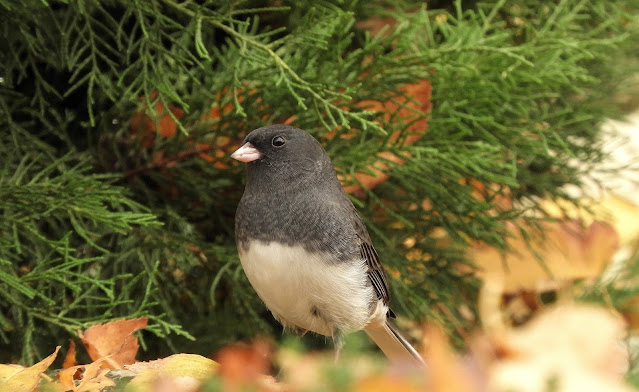

.JPG)






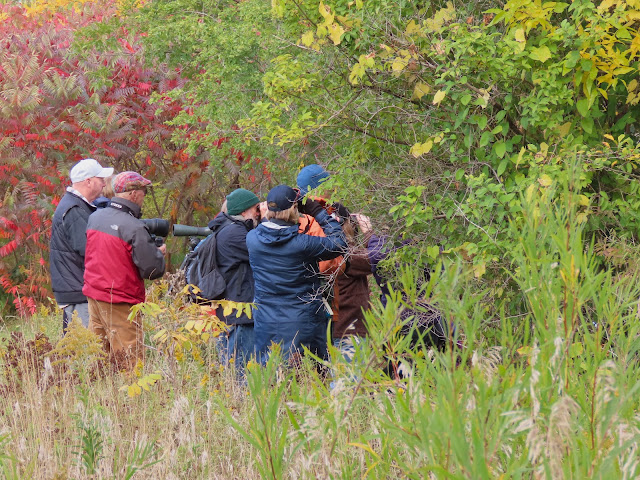














.JPG)






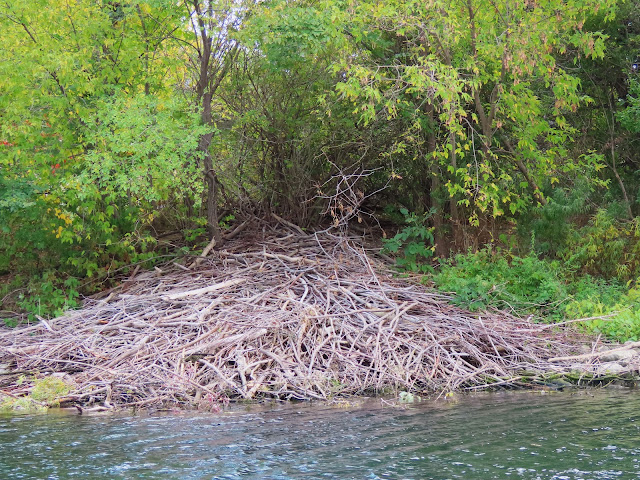









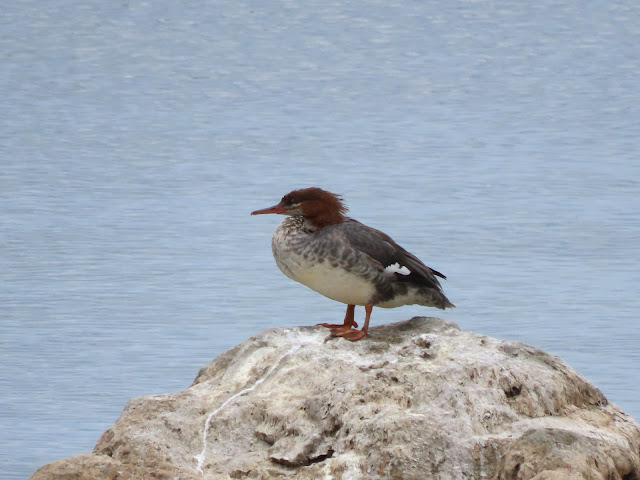



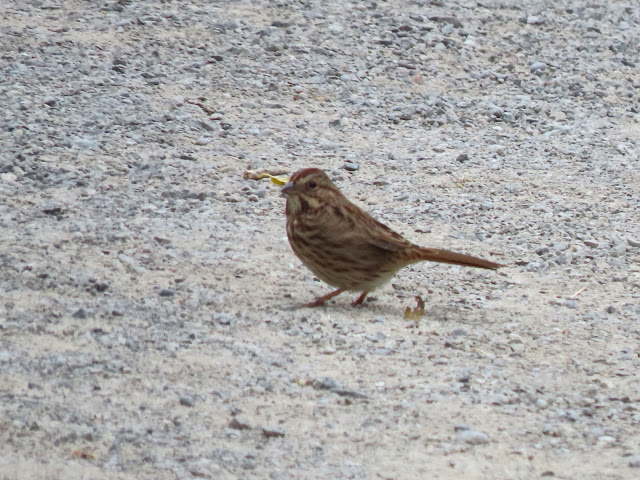


.JPG)


.JPG)





.JPG)














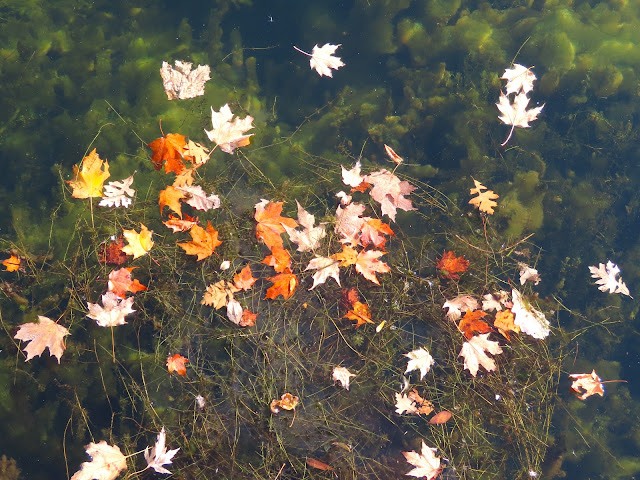
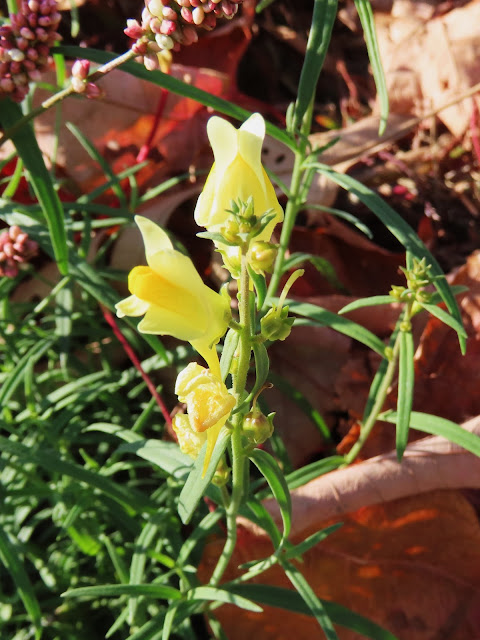





















That was a very busy and enjoyable day!
ReplyDeleteThe pictures are fabulous... needless to say.
...wow, I wouldn't be able to see 43 species in a year!
ReplyDeleteTruly delightful again. As always. Thank you - and I do hope the myrtle lives to fly another day.
ReplyDeleteThank you for all the beautiful photos, David. I enjoy them very much. The litlle mink was very cute.
ReplyDeleteHugs and kisses, Marit
Hari OM
ReplyDeleteWell, that was an excellent outing with so much to see and appreciate - as always, a joy to ride along on your e-tails! YAM xx
Love the Mocking bird and the Mink but a fabulous set of photos.
ReplyDeleteHope all is well over there. Sorry I have not been around for a while, lots of happenings here!!! Diane
You seem to have covered a lot of ground on this day, David, and with some absolutely splendid sightings - and delightful photos too. Out of curiosity, what sort of total distance to you think your group walked that day?
ReplyDeleteI had a quick double-take at that Honey Locust. At a glance, I thought that you'd found a bunch of snakes!
Mink are a bit of a problem in UK. They were, I'm sorry to say, farmed for their fur. However, some misguided animal-rights group decided that they should raid all the mink farms and release the animals into the wild.
Best wishes to you and Miriam - - - Richard
No long walks were involved, Richard. I would guess around 5 or 6 km in total.
DeleteWhat a fabulous outing you had. Lots of beautiful photos and a great narrative to accompany it. Hope the little Myrtle Warbler recovers from its crash.
ReplyDeleteA sad end to the day, I hope the Myrtle Warbler recovered ...
ReplyDeleteBut, what a fabulous Autumn Day of wonderful sightings, the pair of Canada Geese doing their synchronized diving made me smile.
Thank you for detailing your wonderful days out, I thoroughly enjoy these posts :)
All the best Jan
I was intrigued by the mink. There's a brook near here called Mink Brook and I wonder if I'll ever see minks there. You do a grand job of organizing your outings.
ReplyDeleteNancy took some great photos of the American Mink showing his little pink nose, very intense dark, bright eyes, some fine white whiskers, and how alert he was to everything happening around him. I called the Mink a he but maybe he was actually a she!
ReplyDeleteThe first photo was taken by Nancy, Rosemary. The balance are Miriam's.
DeleteApologise to Miriam - they are superb.
DeleteBy the way, although I do still have concerns about our blog friend, my comment has not been posted - maybe it is in spam. Yesterday, however, other comments showing concern were posted, presumably by him.
Thanks, Rosemary. If he is posting comments you would think he would leave a brief note about his status, wouldn't you?
DeleteI would have thought so too.
DeleteGreat outing! Loved the pictures of the Mink.
ReplyDeleteWhat great excursions! Love the mallards. We saw some today for the first time in ages. They were are great find.
ReplyDeleteHow fortunate to see the encounter between the mink and the cormorant. It is a privilege to see animals in their element doing what comes naturally.
We had a look at CavendishGrove from a distance today. The area is closed since Fiona but it looks like the trees survived! We were so happy to see them!
I am glad to hear the trees survived at Cavendish Grove, Marie - one of my favourite spots on PEI.
DeleteThis time of year when I see Canada geese I wonder if it's the last time before spring. Today it was a pair flying over the French embassy.
ReplyDeleteIn that case they were doubtless Bernaches du Canada!
DeleteWe see most of these birds in Virginia so I would say they’re pretty adaptable to climate. Whether people will preserve enough for their habitat is still an open question.
ReplyDeleteRoses are red; Violets are blue; These fallen leaves are colorful too! ( As you wish ,David)
ReplyDeleteIt was an awesome day with an awesome group and with an awesome leader! The photos are magnificent. We were so lucky to see the mimus polyglottos ( Northern Mockingbird) !
I knew I could count on you, Selwyn, to apply the full scope of your creative forces to come up with this wistful, evocative stanza!
DeleteSo many wonderful photos, David. I love seeing some that I know, and so many more unknown to me. Looks like you had a wonderful outing.
ReplyDeleteWow, David, what a lot of different birds and animals you got to see, it was evidently a great day out! It's nice to have such a companionable group, too! Have a great day, hugs, Valerie
ReplyDeleteFoto meravigliose!
ReplyDeleteThe photos are lovely to see. Doesn't that male Northern Cardinal look specular!
ReplyDeleteShame about the bird who flew into the glass, the same thing used to happen at my late parents house and many a morning we would find a dead bird on the balcony.
That Kingfisher is a stunner and I really loved the mink. Oh, it makes me so sad when birds go into the glass. It sounds like a grand excursion -- I do hope the residents nearby realize what a gem they have so close at hand and take advantage of the fact to visit and be with the birds in a natural environment tucked into a world of stone and concrete.
ReplyDeleteThe Dark-eyed Juncos make their way all the way south to us here close to the Gulf Coast by winter. I look forward to their return. Many years ago, while living a lonely life in a big city, one of my favorite activities was watching the Rock Doves, aka pigeons, on the roof of a nearby high-rise. I learned to appreciate their beauty then. They really are remarkable birds.
ReplyDeleteI was surprised to see your photo of the Zebra Mussel without a word about its status as an invasive species. There's quite a campaign on-going now in Texas to get fishermen to thoroughly clean their boats before leaving one lake and launching into another, since that seems to be one way the creatures have spread.
ReplyDeleteI smiled at the Cardinal, too. I have a friend, a casual but interested birder, who lives in Calgary. She recently visited Toronto, and was thrilled beyond words to see her first Cardinal: so common here, but so uncommon in her world.
Perhaps I should have commented that it is an invasive species, a fact well known on the Great Lakes where, among other mischief, it clogs the intake pipes of municipal water supplies. It is a huge problem in these parts. When docks are removed from the water for winter it is incredible to see the volume of Zebra Mussels attached to them.
DeleteA plethora of birds! Beautiful to see. I loved those swans. I saw swans for the first time in Zurich, Switzerland in November 1969. So elegant, so refined. The next day, it snowed heavily, and those swans disappeared.
ReplyDeleteBuenas tardes, amigo David, interesante y muy bella salida, muy completa de avistamientos que a buen seguro todos disfrutaron y además el tiempo se prestó a ello con un día espléndido que acompañó de buen grado.
ReplyDeleteLo que no acabo de comprender como es posible que autoricen ese tipo de construcciones tan cerca de esos bellos parajes con tantas especies que deberían estar en caso de que no lo estén protegidas. No escarmentamos y terminamos invadiendo todo lo habido y por haber.
Un gran abrazo querido profesor de tu siempre amigo y alumno Juan.
Looks like yet another wonderful outing! Love the photos and Selwyn's poetry!
ReplyDeleteDelicate and refined, isn't it? I'll suggest a sonnet next time!
DeleteHello David,
ReplyDeleteWhat an action packed day, so many beautiful bird sightings. I usually love seeing the birds but the mink was a cutie on this post. Take care, enjoy your day!
You always have such great discoveries on your walks. I'm not very familiar with the great lakes, but they certainly do provide lots of birds and mammals for you to see. I recently saw my first mink in Yellowstone back last month. He/she just ran across the deck while we were eating breakfast right next to the window where we were sitting. (boy that sentence is a mouthful). Hope all is well this week. hugs-Erika
ReplyDeleteVery nice fieldtrip!...I came to an understanding that birds are way more resilient than what I was taught at the University. It amazes me how they adapt and thrive to change in environmental conditions....beautiful pictures...Abrazotes, Marcela
ReplyDeleteTruly enjoyed your outings! Never knew mink would attack such larger prey. I always seem to learn from you. :)
ReplyDelete
ReplyDeleteInteresante y didactica entrada. Buena excursión con gran colección de aves. Me encantó ver el visón. Gracias.
Buen jueves David.
Un abrazo.
Hi David.
ReplyDeleteHow nice that you can make all these outings.
Lots to see.
Nice birds.
Greetings from Patricia.
Your birding expedition looks very enjoyable. I hope you are now getting some of the same rain clouds that finally arrived here yesterday — we needed it too, and maybe it’s going your way from Michigan.
ReplyDeletebest…mae at maefood.blogspot.com
BRAVO!!!
ReplyDeletea feast for these old eyes
much🧡love
Autumn gives an extra charm to the images. The swimmer is admirable.
ReplyDeleteGorgeous shots. What a great day. I love seeing the Mink in action. Have a lovely day.
ReplyDeleteYou covered a lot of ground - do your outings always last the entire day? How lovely to dedicate a day to all these beautiful wonders of nature. I have to say the mink certainly steals the show! What a stunning difference between the incredible nature and wildlife sightings and those skyscrapers - I know what I prefer. While I read this a Northern Mockingbird was singing his little soul out in the tree right in front of my window. I lvoe how the pick up singing again in the fall for a few weeks after they had been silent during the summer. All the birds seem to be more "chatty" at the moment.
ReplyDeleteMost of my outings are half day affairs, Carola, but a few are whole days. I have a trip coming up in February to Cuba - that one is eleven days!
Deletelovely outing great photos thanks for sharing.
ReplyDeleteDavid - so many beautiful species, as always. I was particularly struck by the Northern Mockingbird. And then, to see not only a Muskrat but also a Mink (possibly two)! And in hunting action ... what a gift to you and all your companions. As I like to say, you only see Nature if you are in Nature!
ReplyDeleteWhat a wonderful outing with like minded friends. Love all the photos! The Dark-eyed Juncos have returned to our area. It was fun to see them in the Arctic in August, and now here as winter begins (although it's unseasonably warm, still).
ReplyDeleteYou had nice weather for your outing! You wouldn't catch me swimming at this time of year, lol...brave indeed! I love all of the photos David, but the main attraction for me was the story of the mink. Thank you! Btw, we did get our house inspected, but that damage wasn't noticed. At the time of the inspection it was mid-February and there was no sign of water damage in the basement. Our thoughts were that the damage only showed itself come spring each year and by then in 2020, we'd already purchased. But they got it done thankfully! ☺
ReplyDeleteThat kind of damage, that had compromised the structure, should clearly have been revealed by a building inspector, Rain. I would consider suing the inspector.
DeleteI've heard of swimming with the dolphins but with the "swans" is a new one. Birds hitting glass is a shock … quite often I find they seem to recover but after a bit of a nap.
ReplyDeleteAn incredible outing, with so much to see.
ReplyDeleteWonderful photos, thanks for sharing.
Have a nice weekend
So many beautiful birds and views. Love the falling leaves pic!
ReplyDeleteHi David, A real pleasure to sit back, relax, and click through your photos. Many wonderful captures! Sad to hear about the Myrtle Warbler but fascinating to dwell on your last photo for a while. That bird is at an interesting point in the evolution of everything. The head feathers are a very common color. But the little patch of yellow and blue … where did that come from? 😊
ReplyDeleteHello David,
ReplyDeleteGreat reports on your outing. I always enjoy seeing the bird photos, critters and all the nature scenes. It is nice to have these places so close to the city. Wonderful photos. Thank you for linking up and sharing your post. Take care, enjoy your weekend. PS, thank you for leaving me a comment.
Great birds (and mink) to watch. Even if the latter is a threat to the birds. Would love to join one of these walks! A shock to see the tall buildings so close. The Belted Kingfisher made it for me!
ReplyDeleteYou did indeed have a good group with keen eyes! There's so much to see if we will just get out in nature and observe. I'm always shocked that I can go to so many trailheads and not see anyone. Where is everyone? Staying inside their houses? How sad and how much they are missing. Thanks for sharing your beautiful sights!
ReplyDeleteComo siempre tus paseos son preciosos. Hoy también encontré un herrerillo muerto, y sentí mucha tristeza. Un abrazo.
ReplyDeleteBeautiful nature photos, David. I enjoyed seeing the mink. You wouldn't catch me swimming in Lake Ontario this time of year!
ReplyDeleteGiven the less than pristine quality of the water in the Great Lakes, I wouldn't swim there at any time of the year!
DeleteHello David :=)
ReplyDeleteIt was so wonderful to see so many different water birds and other creatures I have only dreamed of seeing. Beautiful nature shots. I do think glass doors should have bird stickers on them, to prevent birds flying into them.
All the best and hugs from Portugal.
Bardzo lubię zdjęcia z Waszych wycieczek. Taka różnorodność obserwacji, ciekawe zdjęcia, różne widoki. Udane obserwacje!
ReplyDeletehello David
ReplyDeletean abundance of images, and a contrast between the big city and nature, we think that the city people don't have much to do with nature, and the city people look out of the window on the 50th floor and wonder what the people are doing in the bushes below : -))
Greetings Frank
I can only conjecture as to what some are doing in the bushes!
DeleteAn amazing outing, David.
ReplyDeleteI enjoyed the fabulous series of photos.
Happy Sunday!
Hi David - what a wonderful time you all had ... and gosh I wish I could join you. The photos are delightful, added to with excellent notations about the subjects and the various aspects to think about for our future. Humanity is probably on the way out - thankfully not in my lifetime ... but we are an inconsiderate species. Cheers Hilary
ReplyDeleteMaybe one day, Hilary....
DeleteIt was interesting to see that a mink would take after a cormorant. Cormorants are big birds. Interesting for your group to witness. Though those buildings are beautiful in their own way, I couldn’t live like that. I think such isolation from the natural world changes people.
ReplyDeleteAn eventful day David and all in my former neck of the woods. I know all these trails so very well from my hiking days, rich in wild life. Cedarvale was another park (near the subway, between Elginton and St. Clair Ave with so many varieties of owls it was breathtaking. Just around the corner from my old home. You had a great adventure!
ReplyDeleteXO
WWW
I hadn't realized that you formerly lived in Toronto, but I am happy that I could take you back there for a while!
DeleteI was delighted with the panorama of Toronto, the mink and the wonderful birds.
ReplyDeleteGreetings.
All these meetings are great. Here again, Man is nibbling! What a misfortune.
ReplyDeleteThe end of the day must have been very annoying. All these windows are fatal.... but what's the point?! It is ugly. I hope that the bird could leave.
The photos are of quality, thank you.
Kisses David
43 species is impressive! Quite a few of these are birds I've never seen. I've only seen cormorants in Florida, and had no idea they were up north, as I've never seen one here in NJ. The mink pictures are gorgeous!
ReplyDeleteSo many fabulous photos of beautiful creatures! That synchronized diving shot is a beauty! I love seeing the birds and animals that we don't have here.
ReplyDelete
ReplyDeleteWhat a delightful outing! Thank you, David, for leading us on this wonderful adventure through Toronto, Mississauga, and Oakville. It was a pleasure to explore Humber Bay Park West and witness such vibrant birdlife alongside familiar faces and new friends. Steffanie, it was fantastic having you join us for the first time!
The birding was exceptional, and the sightings of Dark-eyed Juncos and juvenile Black-crowned Night Herons were truly remarkable. Your observation about the potential impact of climate change on these species adds depth to our experience and reminds us of the importance of environmental awareness.
Thanks to everyone for contributing to such an enriching day of birdwatching and mammal watching. Let's cherish these moments and continue to explore and appreciate the natural world together. Looking forward to our next adventure! Visit us also https://birdsittingtoronto.ca/bird-education/